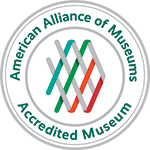Eddie Owens Martin (St. EOM), Pasaquan, Marion County, GA
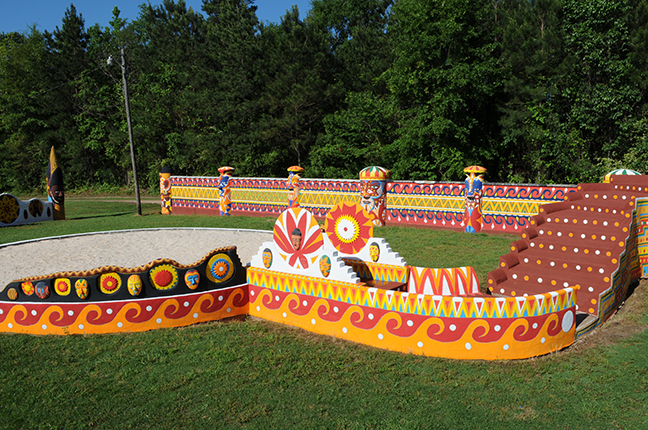
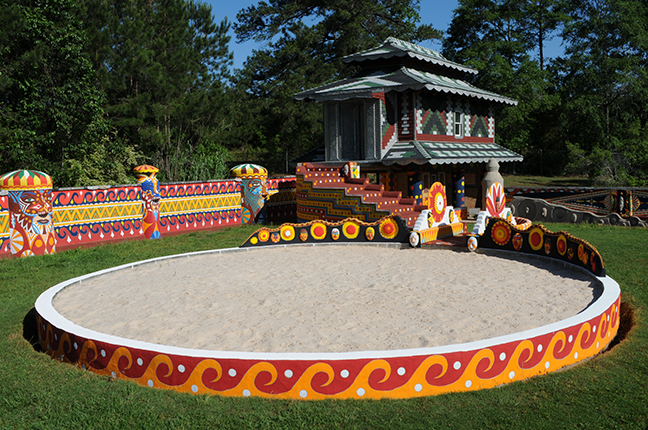
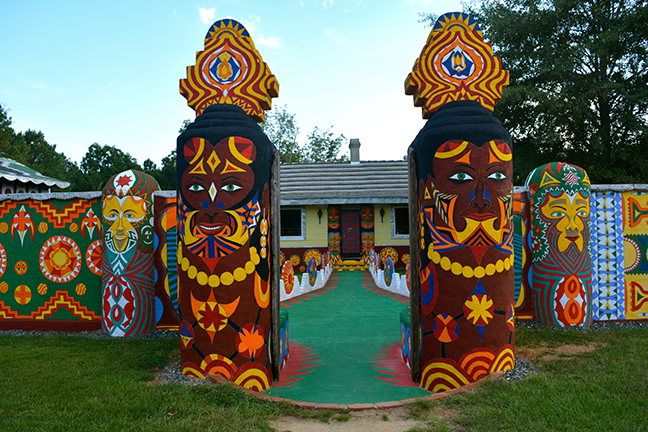
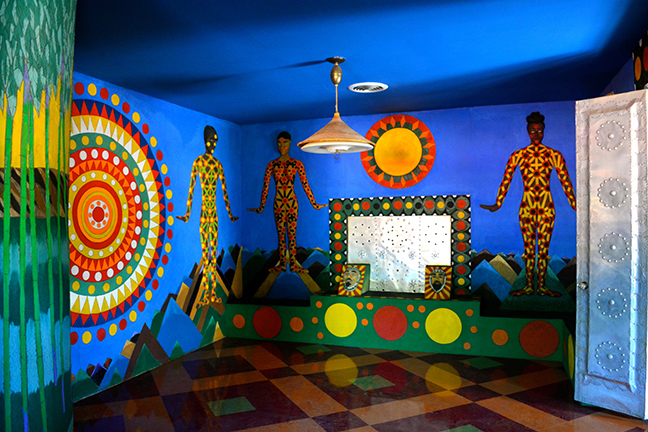
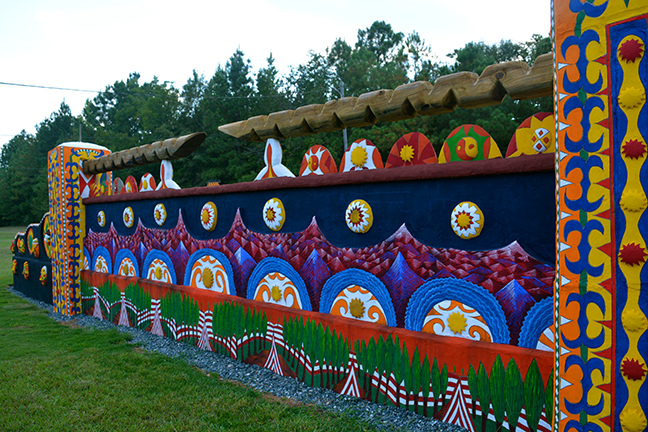
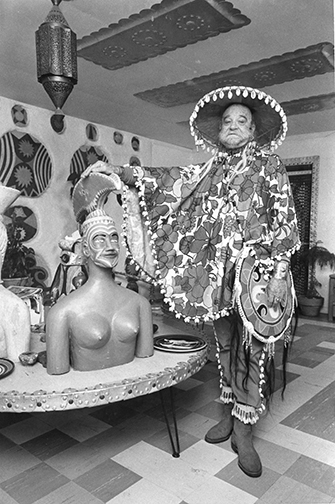
The Site
After moving into his family’s small farmhouse in rural Buena Vista, Georgia, Eddie Owens Martin set out to turn the house and grounds into a complex for his personal religion, Pasaquoyanism. Influenced by his research on pre-Columbian temple structures and the fabled lost continents of Mu and Atlantis, he erected temples, pagodas, shrines, walls, and walkways embellished with brightly painted, oversize concrete totem faces, whirling mandalas, giant undulating snakes, and variously styled nude figures.
As the founder of Pasaquoyanism, Martin changed his name to St. EOM and adopted the persona of a spiritual guru and leader. His large, handmade ceremonial wardrobe included brightly colored robes and capes, turbans, feathered headdresses and hats, and elaborate jewelry. He kept his hair and beard long, fastening them on top of his head into braids starched with rice paste and decorated with jewels. He conducted elaborate rituals that included dancing, playing music and chanting.
After his death in 1986, the site was maintained by a group of Martin’s friends who formed the Pasaquan Preservation Society. In 2014, the Kohler Foundation, Inc., partnered with Columbus State University to restore Pasaquan. Today, as a university-managed site, it is open to the public. The Arts Center holds a collection of six hundred works by Martin including paintings, works on paper, textiles, furniture, and jewelry.
Eddie Owens Martin
1908–1986
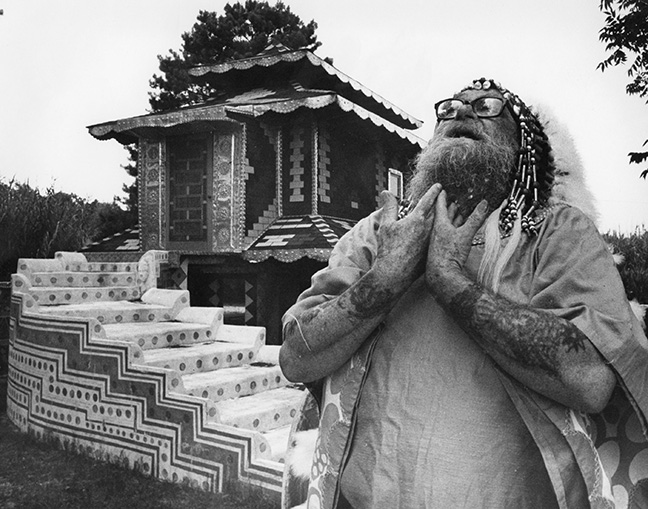
Eddie Owens Martin was born in 1908 in rural Marion County, Georgia, to a family of sharecroppers. To escape his abusive father, he ran away from home at age fourteen to New York City, where he hustled to make ends meet by conducting tea-leaf readings and engaging in prostitution. He began drawing and painting, selling his work at outdoor markets and festivals. During an illness in the 1930s, Martin had a vision of deities from the future who told him he was going to become a “Pasaquoyan” and gave him the name St. EOM. In 1957 Martin returned to Georgia, moving into the family home he inherited. He began altering the house and grounds to pursue this personal religion and establish a highly decorative world of his own called Pasaquan.
After Martin’s death in 1986, a group of his friends and supportive artists formed the Pasaquan Preservation Society and began caring for the site. In 2008 Pasaquan was added to the National Register of Historic Places.
In 2014 the Pasaquan Preservation Society, Columbus State University, and Kohler Foundation, Inc., collaborated to conserve the site. Pasaquan was gifted to the university for long-term stewardship, and six hundred works by Martin, including paintings, works on paper, textiles, furniture, and jewelry, were gifted by the foundation to the John Michael Kohler Arts Center.
Arts Center Exhibitions
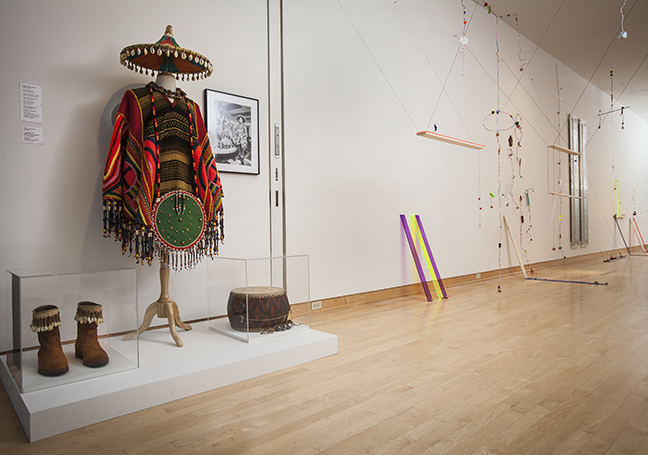
Pasaquoyanism: Eddie Owens Martin +Jonathan Frederick Walz +Gê Orthof
January 22–May 7, 2017


